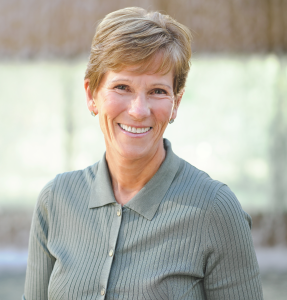Turning challenges into opportunities: Q&A with Sue Paish, CEO of DIGITAL global innovation cluster
 Sue Paish (photo at right) has been CEO of DIGITAL since the federally funded, Vancouver-based global innovation cluster started operating in 2018. As CEO, she leads a portfolio of digital innovation and capacity-building initiatives.
Sue Paish (photo at right) has been CEO of DIGITAL since the federally funded, Vancouver-based global innovation cluster started operating in 2018. As CEO, she leads a portfolio of digital innovation and capacity-building initiatives.
DIGITAL, through a collaborative innovation model that brings together industry, academic, community and public sector partners, accelerates the development and deployment of technologies across the health, natural resources and skilling sectors to solve some of industry’s and society’s biggest challenges while providing growth opportunities for industry partners.
Prior to leading DIGITAL, Paish held leadership roles in major Canadian organizations, including as CEO of LifeLabs, CEO of Pharmasave, and managing partner of Fasken Vancouver where she spearheaded the merger of three Canadian law firms into a national leading firm across three continents.
Paish serves on the boards of TELUS International, Canadian Tire, and Own the Podium. She has previously chaired the Business Council of British Columbia and the Vancouver Board of Trade. She has received recognitions for her community and professional contributions, including the Order of British Columbia, King’s Counsel, Honorary Doctorate of Technology, Influential Women in Business Lifetime Achievement Award, YWCA Women of Distinction, and the Peter Lougheed Award for Public Policy.
Under Paish’s leadership, DIGITAL has achieved some impressive key performance indicators:
- 1,640 organizations joining the digital innovation ecosystem (DIGITAL’s 2028 target was 1,250).
- 166 collaborative projects across DIGITAL’s programs (2028 target was 150).
- $458 million in investment value committed by industry and other partners (2028 target: $350 million).
- $767 million value of total portfolio (2028 target: $700 million).
- 188 new products and services developed, of which 158, or 84 percent, are SME-owned (2028 target: 300).
- 734 IP assets and patents created, of which 586, or 80 percent, are SME-owned (2028 target: 1,000).
- 15,000 talent development projects participants (2028 target: 15,000+).
- 59 SMEs scaled (2028 target: 50).
- $1.4 billion in new follow-on funding raised by Canadian companies participating in collaborative projects, including $1.1 billion raised by SMEs (2028 target: $2 billion).
- $4.3 billion in incremental revenue over five years from commercial outputs generated from investments (2028 target: $6 billion).
In Part 1 of a Q&A with Mark Lowey, Research Money’s Managing Editor, Paish talks about DIGITAL’s engagement with Canadian small and medium-sized enterprises, how SMEs have benefitted from participating in DIGITAL’s network, how intellectual property is handled, the accomplishments she’s most proud of during her time as CEO, and the biggest challenges the innovation cluster has faced.
In Part 2 of the Q&A, which will be published on January 15, Paish discusses DIGITAL’s focus on skills training, the cluster’s investment in Indigenous-led talent and connectivity projects, diversifying the cluster’s investment base, her long-term vision for DIGITAL, the consequences of a possible change in federal government, and potential risks of the incoming Donald Trump administration in the U.S.
R$: One of the main goals of the federal government’s global innovation cluster initiative was to engage more Canadian SMEs in innovative commercial projects with large corporations, to help SMEs scale up and expand their market reach. Has DIGITAL been able to achieve this goal during the time the innovation cluster has been operating and, if so, how?
SP: I can say unequivocally that DIGITAL has achieved the goals especially relative to – not just SME engagement – but achieved the ultimate goal of helping Canadian SMEs grow and be successful. Over 70 percent of DIGTAL’s investments over the past five years have been in SMEs. We all know that non-dilutive investment in promising SMEs is critical for them to continue to develop and refine their products, as well as learning how to grow.
Secondly, following on from the amount of investment, companies that have been involved in at least one project with DIGITAL have collectively raised $1.4 billion in follow-on funding in their companies. And 80 percent of this $1.4 billion – or approximately $1.1 billion – has been raised by SMEs.
When SMEs receive investment from the private sector, it helps them grow. It also helps them learn how to grow because the investor in the private sector will put demands on them and expectations for outcomes, through which the SME will learn how to continue to grow, deliver what customers need and evolve their products. Secondly, the fact that our companies have raised $1.4 billion in follow-on funding means that they’re able to adapt to a very diverse investor environment. Every investor has its own criteria for evaluating a target company. It may be the credibility or the promise of the product that’s being created. It may be potential market reach. It may be customers who are already adopting [the product]. It may be all of the above or other things. But what’s clear is that the investment community in Canada sees credibility in the SMEs that DIGITAL has been supporting and the quality of the SMEs and the products and services that are coming out of SME involvement with DIGITAL.
A couple of years ago, the Government of Canada created a program called Hypergrowth. That program was designed to target the top-performing SMEs across the country for selected coaching and support and guidance to help them grow. The government selected eight SMEs across the entire country. Two of the eight are companies from DIGITAL – Clarius Mobile and AlayaCare. That’s 25 percent of the initial cohort in the Hypergrowth program that were from DIGITAL. I think that says a lot about the quality of the SMEs that we’ve been able to work with and their promise [which] not just private sector investors have seen because they invest in them, but also public sector organizations like the Hypergrowth program.
R$: Can you give us a couple of examples of SMEs that have worked with DIGITAL and how they’ve benefitted?
SP: There’s a company called Ideon Technologies, a small company in Richmond, B.C. Ideon Technologies is focused on helping the global mining sector evolve so that minerals can be identified and ideally extracted without having a significant deleterious impact on the environment. Traditional methods of looking for minerals involves a lot of boreholes being drilled into the ground and then core samples being examined. It’s really deleterious to the environment, very expensive and not a high return.
So Ideon, working with partners, developed what’s called an Earth X-ray. The Earth X-ray uses a technology called muon tomography that can find and measure the size and density of especially critical minerals that may be up to one kilometre into the Earth. This is essential not just to Canada but to the global survival in some ways of communities and countries, because we know that the world is on a path to transitioning to sustainable energy production. You can’t do sustainable energy production – think of electric vehicles – you can’t do electronic batteries and electric vehicles without critical minerals.
Virtually all of the near-surface critical minerals on the planet have already been extracted. The critical minerals we need for the transition to sustainable energy are deep into the Earth. So we need technology that can efficiently and cost-effectively identify these minerals. That’s exactly what this little company Ideon set out to do. DIGITAL, using our model of collaborative innovation, put a team around them including one of the largest mining companies, BHP, but others as well, to produce this Earth X-ray technology and see if it would work. This Earth X-ray technology is now being used by five of the largest mining companies in the world. It has increased the certainty and the accuracy of drilling to more than 95 percent. It decreases that hit-and-miss drilling which creates terrible damage to the Earth and the environment and is also really expensive.
What has this done for Ideon? Ideon doubled its size in 2023 and they just told us they’re doubling their size again in 2024. In 2022, Ideon raised $21 million in Series A [funding] and they’ve achieved a 914-percent revenue growth in the three years from 2019 to 2022.
I’ll give you another example from DIGITAL’s health portfolio. We hear about our health system and the challenges it faces nearly every day in the news feeds. One of the factors that ripples through a lot of the challenges in our health system is physician burnout. A key issue that creates physician burnout is the amount of time that physicians spend on administrative stuff. The physician meets with the patient and then has to spend time transcribing their notes or figuring out what they’re going to do with what they’ve heard [from the patient], and a lot of administrative work.
Using our approach at DIGITAL, which is let’s try and solve some of Canada’s and society’s biggest challenges and let’s try and capture some of the biggest opportunity, this health issue around physician burnout lands in both of those areas. So using the collaborative innovation model, we put together a group of SMEs – ORX, Phelix AI, Tali, HEALWELL AI – and we put them together with WELL Health. WELL Health is the largest medical clinic network operator in Canada. What they’ve done is deploy this technology across their clinics so that when a patient comes in and has the conversation with the physician, rather than the physician then leaving that conversation and having to transcribe their notes and interpret their notes and have follow-on conversations with other folks, this technology actually does that for them. It transcribes the notes, deploys AI to give suggestions that can complement the physician’s own conclusions or thoughts about what the patient has been saying, and frees up the physician from that administrative time.
Here's another example in health. People might not spend much time thinking about sores on the body, in particular think about a bedsore or a sore that people have after surgery. Collectively, these are called pressure injuries. They impact about one-quarter – 26 percent – of patients in Canada. This may come from having surgery, being immobile. All kinds of conditions cause people to be sedentary, in a bed and experiencing pressure injuries.
We put together a group of SMEs – Excelar, CloudDX, 3D Bridge Solutions and Fluid AI – jointed by Medtronic that focused on developing a fully integrated solution to enable high-quality homecare for recovering patients. Medtronic has a big presence in Canada but is a globally recognized provider of health technologies. The collaboration between Excelar and Medtronic led to the project on pressure injuries. They created a technology to help address these pressure sore injuries. The relationship between Medtronic and Excelar continues today, and they’re actually working on a new project for new technology that is going to decrease nuisance alarms in long-term care facilities. It might sound minor unless you work in one of those facilities where these alarms go off constantly. The technology is using AI to mitigate these alarms and identify issues with the patients before the alarm goes off. This technology is being deployed right across Providence Health Care, which is the largest health care network in Vancouver.
R$: When the innovation clusters were first created, some critics said the big corporations participating in projects were going to capture all the intellectual property and the SMEs wouldn’t be able to keep their IP or leverage it. Have the SMEs that have participated in DIGITAL projects been able to retain and leverage their IP?
SP: IP that is background IP that an organization might bring into a project consortia, or IP that is foreground IP that’s created as a result of the collaboration must stay in Canada in terms of ownership. Secondly, IP that is brought in especially by an SME into a project, ownership of that IP must stay with that SME or the company that brings it into the project. Over the last five years, through our projects our partners have created 734 IP assets that are Canadian owned and will remain Canadian owned.
That has been a difficult conversation with some companies. We stick to our guns, because IP is sometimes the most significant asset that an SME may have. We use that model of background IP must be retained in Canada and the sharing of the ownership for foreground IP is negotiated. DIGITAL supports the negotiation of that [foreground IP], using the “FRIEND” principle: Fair, Reasonable and Non-discriminatory terms. And we have very skilled IP advisors that work with and support our project consortia in making sure that the negotiation of that foreground IP ownership is truly fair, reasonable and non-discriminatory.
Of the 734 IP assets that our project teams have produced to date, 586 of those – or 80 percent – are SME-owned.
R$: What are two or three accomplishments that you’re most proud of during your time as DIGITAL’s CEO? Any new or recently launched initiatives or programs you’re particularly proud of?
SP: Health is the single-largest item in every provincial budget. It consumes over 20 percent of every tax dollar collected in Canada, and we need a material reset to improve access to health systems, health care, better outcomes and the goal of sustainability. We’ve put a big focus on that. I’m really proud of the outcomes that have been delivered.
Six-and-a-half million people in North America have a chronic wound. If we’re healthy, we don’t think about that. Thirty percent of health care costs go to wound care – bed sores, surgical wounds, infections. This has been traditionally treated at the bedside. Why am I proud of the initiative we’ve taken here? It’s because it happened during COVID. One of the biggest challenges Canada faced was when COVID hit in 2020 and all of a sudden the world realized the number of key services and things that we did that required human interaction. While it might sound small, wound care if you’re a person or a family who’s got a loved one suffering with a wound and you can’t get a community nurse to the home and you don’t know how to serve that loved one, this is a serious issue.
So we focused on that in the midst of the pandemic. We put a group together including a small company called Swift Medical along with some partners – UHN (University Health Network), McGill University, the Province of Ontario, SickKids Hospital, AlayaCare. These organizations came around in the middle of the pandemic to say how can we address this better. The solution is brilliant in simplicity. It’s an application for your smartphone that allows a caregiver or the patient themself to take a 3-D medical-grade image – we’re not talking just a photograph – that’s transmitted to a wound expert that then guides the patient or the bedside caregiver, maybe a spouse or a family loved one, on how to treat that wound. This technology is now very broadly deployed.
The second thing I’m really proud of, and it’s a differentiator for us, is the impact that we’ve had on skilling. We saw pre-pandemic that employers were starved for skilled talent in higher-level jobs. I’m thinking of biomathematicians and data analysts, etcetera. At the same time, when we looked across Canada we saw huge populations of people that were under-employed or precariously employed and would likely stay there the rest of their lives because they couldn’t access traditional skilling opportunities. They couldn’t take months or years away from their jobs to get a degree or a diploma.
So we looked at that early on and really accelerated during COVID the mandate, self-imposed, to improve how we approach skilling, especially for marginalized populations. I’m very proud to say that through our skilling program, we put 15,000 Canadians on the road to career pathing jobs by providing them with both the relevant skills and the training on how you keep a job. It’s not just having the skills, it’s how you keep a job. Many of these citizens would have remained precariously employed or marginally employed the rest of their lives. I’m proud of the fact that during one of the most difficult times for Canada in many decades, and only a couple of years in to the creation of DIGITAL, we were able to lean in and deliver technologies that make a difference to the companies that are building the technologies [and are] important to Canadians who are trying to live their lives in the best way they can.
R$: What are a couple of the biggest challenges that DIGITAL has faced?
SP: One of the challenges that we have faced since the outset and continue to face – and the challenge is also an opportunity – is the diversification of our funders. Right now our primary investors are our companies. But the initial funding, of course, came from the Government of Canada. We now have really significant proof points that this [innovation cluster] model works. It works for multinationals, it works for research institutions, it works for government agencies in multiple domains, it works for SMEs. We’ve got a very good value proposition.
So we are looking at the challenge of expanding our investor base as an opportunity for organizations that are seeking to accelerate meaningful innovation that results in products and services being deployed, and to do community good, and to leverage the success of their own organization. We’ve been very fortunate in the last six years to develop a significant relationship with the Province of B.C., which has proven to be visionary in terms of leveraging this model, and we’re excited to continue [this relationship]. We’re really grateful for what the province has done with us and we’re excited to build on that and to use the experiences that we’ve had with the federal government, the provincial government, and with our big members to attract investment from other investors. Because we think the value proposition to a foundation, to a research institute, to a private company is significant and our model is scalable and adaptable to multiple kinds of investors.
[Another challenge is] Canadians are known for our humility. We’re kind of shy, we’re very bashful. Except in certain sports and contexts we really don’t cheer and wave the flag that much. This is admirable in lots of contexts but it can also hold us back. I want Canada to be excited and proud of what these clusters have done. At DIGITAL, we’ve established ourselves as a global leader in AI, quantum computing, virtual and augmented reality. The majority of our investments have been in AI. We were investing in AI in 2019 before it became a headline item. [I want] Canada to be proud of, rather than be critical of models like the cluster program. Look at the success that DIGITAL has had. Our products are deployed on every continent on the globe except Antarctica. We’re working on that one. Our products are deployed in 96 countries around the world. Not very many people know that.
So one of the challenges that I see and want to turn into an opportunity is to leverage the humility that we have as Canadians into pride that, by being thoughtful and fast at the same time, we have created an innovation enterprise in DIGITAL that has the potential to be globally recognized and internationally respected. Let’s be proud about that and celebrate some of the outcomes from these companies.
The World Health Organization (WHO) publishes its list of the top global health threats. In the midst of the COVID pandemic, the WHO identified antimicrobial resistance (AMR) as one of the top global health threats. AMR is estimated to kill 10 million people around the world by 2050, according to the WHO. AMR is when pathogens evolve and evade antibiotics. The cause of this is mis-prescription of antibiotics, because physicians or health care practitioners on the front line don’t have access to current prescribing data. In fact, even in Canada not too long ago we were relying on paper binders for prescribing guidelines. So what the World Health Organization said is that this is a problem that’s going to kill millions of people.
We had a little company, Firstline in Vancouver, call us and say: You know what, this is a data problem, not a life sciences problem. They said we can solve this by effectively leveraging current data and making it accessible to health care practitioners. This data platform has been created (along with Firstline, project partners included McMaster University, AMR One Health Consortium, and the University of Calgary) and deployed in nearly every country in the world, via adoption by the WHO for AMR guidance and all United Nations peacekeeping missions. People don’t know about it. If we were in other countries, we would be waving the flag saying: Look at how we’re helping global health. That’s both a challenge and a huge opportunity, and I’m super-proud of the Canadian entrepreneurs, the researchers, the multinationals and the SMEs that have stepped up to take on these kinds of challenges and deal with them.
Click here to listen to a Conversations That Matter discussion with Sue Paish.
R$
| Organizations: | |
| People: | |
| Topics: |
Events For Leaders in
Science, Tech, Innovation, and Policy
Discuss and learn from those in the know at our virtual and in-person events.
See Upcoming Events
You have 1 free article remaining.
Don't miss out - start your free trial today.
Start your FREE trial Already a member? Log in
By using this website, you agree to our use of cookies. We use cookies to provide you with a great experience and to help our website run effectively in accordance with our Privacy Policy and Terms of Service.



.png)

